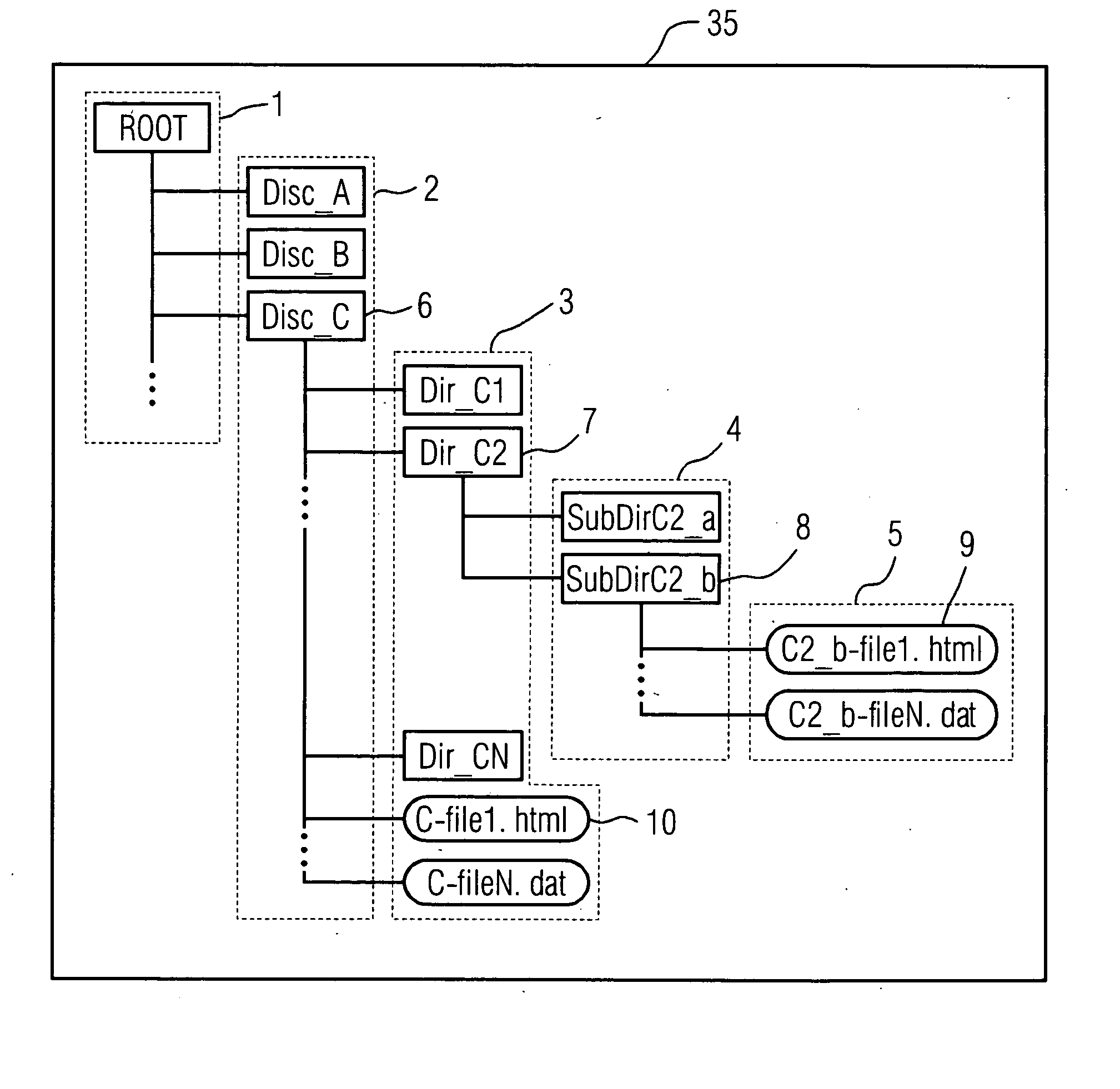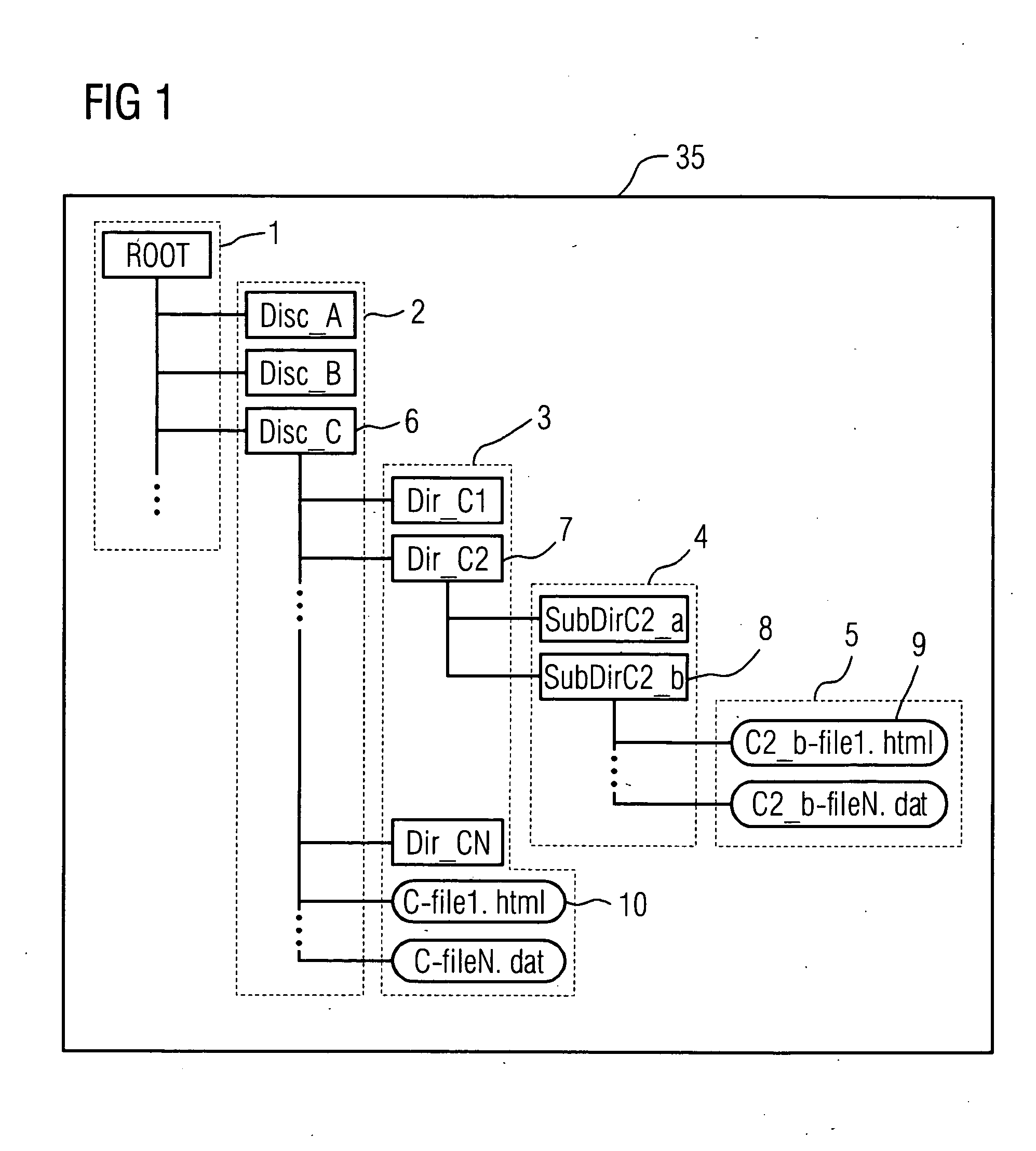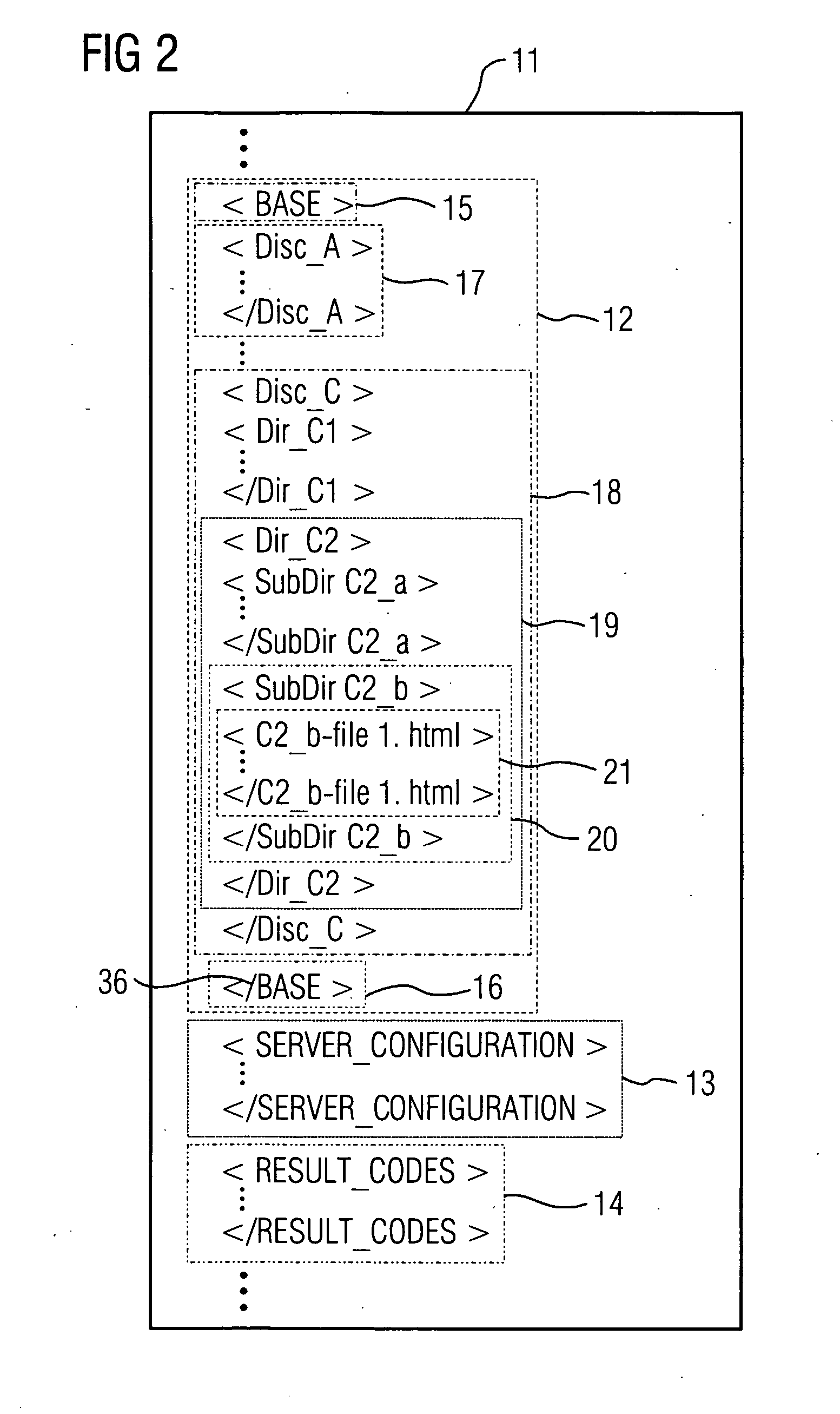Device, especially an automation apparatus, with a file index structure stored in files
- Summary
- Abstract
- Description
- Claims
- Application Information
AI Technical Summary
Benefits of technology
Problems solved by technology
Method used
Image
Examples
Embodiment Construction
[0032]FIG. 1 shows the schematic representation of a conventional hierarchical file directory structure 35, also known as a file system. Such a file directory structure 35 consists of a root directory which represents the highest hierarchy level 1 of such a file directory structure 35. All further file subdirectories or files are hierarchically subordinate to the root directory, i.e. the first hierarchy level 1. File directories are shown as rectangles in FIG. 1. Files are shown as ovals, wherein the connection lines between the rectangles or ovals indicate their association with objects or hierarchy levels. The dots which punctuate the connection lines indicate the possibility of unrestricted subdirectory structures. Unrestricted subdirectory structures include both file directories, also simply known as directories, and files.
[0033] In the example which is shown here, the second hierarchy level 2 consists of three directories, for example, of which only the directory 6 Disc_C has...
PUM
 Login to View More
Login to View More Abstract
Description
Claims
Application Information
 Login to View More
Login to View More - R&D
- Intellectual Property
- Life Sciences
- Materials
- Tech Scout
- Unparalleled Data Quality
- Higher Quality Content
- 60% Fewer Hallucinations
Browse by: Latest US Patents, China's latest patents, Technical Efficacy Thesaurus, Application Domain, Technology Topic, Popular Technical Reports.
© 2025 PatSnap. All rights reserved.Legal|Privacy policy|Modern Slavery Act Transparency Statement|Sitemap|About US| Contact US: help@patsnap.com



